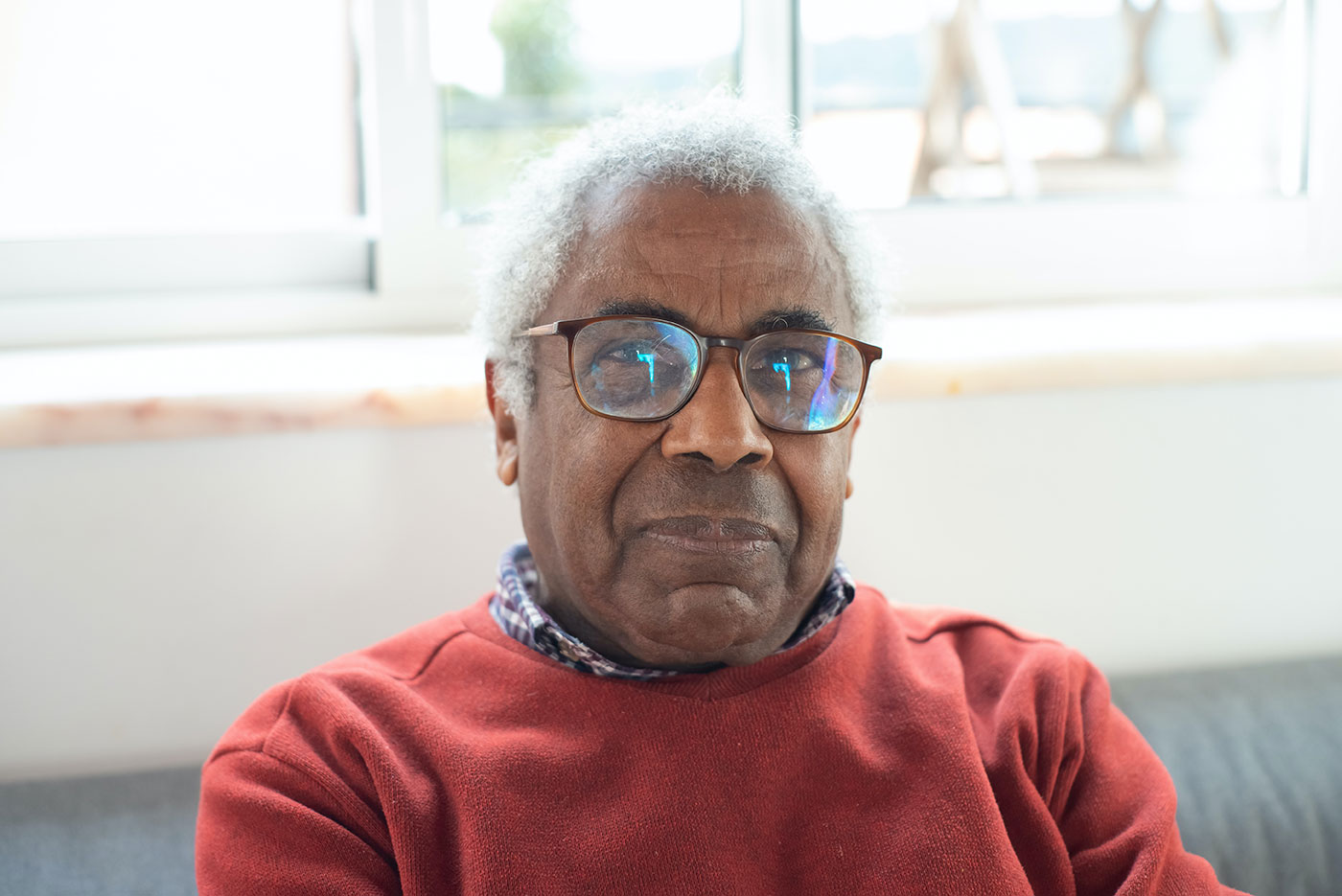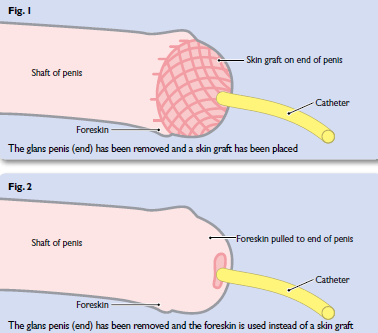
Glansectomy
A glansectomy is performed for cancer that is only within the penis. This page describes the procedure, how to prepare for it. For further information, do call our Orchid nurses who are here to help.

A glansectomy is performed for cancer that is only within the penis. This page describes the procedure, how to prepare for it. For further information, do call our Orchid nurses who are here to help.

A glansectomy is a surgical technique to remove tissue containing cancer cells from the glans (head) of the penis. The amount of tissue removed will depend on how much cancer is present. The surgeon will also remove about 2mm of surrounding tissue (called a surgical margin) to reduce the chance of cancer being left behind.
To improve the appearance of the penis after the procedure, skin may be taken from the thigh and grafted over the area where the tissue was removed (see Fig. 1). Alternatively, the foreskin may be used instead (Fig. 2).
To protect the urethra from becoming damaged during the procedure, a catheter (urine drainage tube), will be inserted into the bladder. This will need to stay in place for 5–7 days. For information on catheter care please click here.
This procedure involves removing the surface tissue of the glans and taking biopsies (tissue samples) from deeper within the penile tissue to check for cancer.
During the procedure, after the biopsies have been taken, a small section of skin from another area of the body will be used as a skin graft to replace the penile tissue that has been removed.
This is called a split skin graft as only the surface layers of the skin are used.
It is important to know exactly what the surgery will involve and what to expect after the operation.
Try to stay well before the operation by eating healthily and taking steady exercise.
Get into the habit of moving feet when resting and not crossing legs. This will help to prevent blood clots which can occur when mobility is reduced.
Prepare mentally by knowing about the procedure. Ask the specialist team how the penis is likely to change following surgery immediately after surgery and in the longer term. Be aware that the colour of the skin graft may look different to the rest of the penis. Involve partners and family in discussions as they will be affected too.
If it’s hard to prepare for surgery emotionally, counselling can help men come to terms with their treatment and diagnosis call the Orchid helpline. Read the personal stories of some of the men who have recovered from penile cancer.
After surgery, men will need to stay in bed for up to 48 hours to allow the skin graft to join onto the penis tissue. Pain killers will be given on a regular basis. It is important to take these regularly and not just when pain is felt.
The penis will have surgical dressings over it which will usually be left in place for up to five days. Doctors and nurses will check these dressings and the site of the operation regularly for any abnormalities such as bleeding or infection.
Men should not have a bath or shower until advised by the medical team. They may be asked to have a salt bath after 14 days. After a salt bath, the operation site should be patted dry with a clean towel or gauze and any material that may leave fibres on the site avoided. Alternatively, a hairdryer on a cold setting can be used to gently dry the area.
As the site of the skin graft heals, it may smell unusual and this can be alarming but is a result of the natural healing process. The stitches will dissolve but may take 4–6 weeks to fully disperse.
If a graft has been taken from the thigh, a waterproof dressing will be applied which will need to remain in place for two weeks.
A follow up appointment will usually be made within a few weeks to check how the penis and skin donor site are healing satisfactorily and to discuss the results of surgery.
Men will need to take at least four weeks off work.
To view and download a leaflet on this procedure please click here